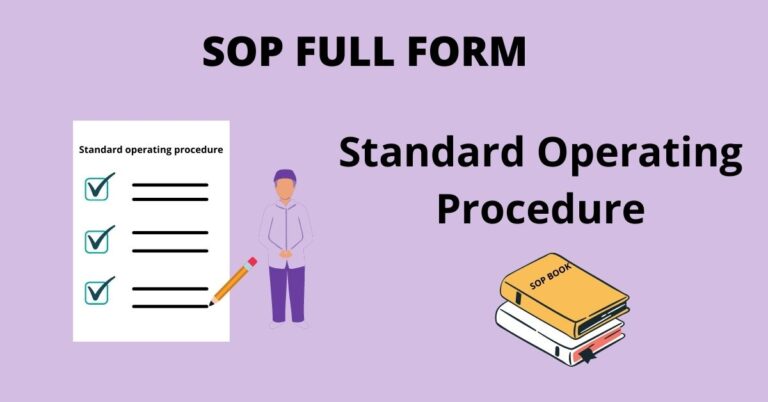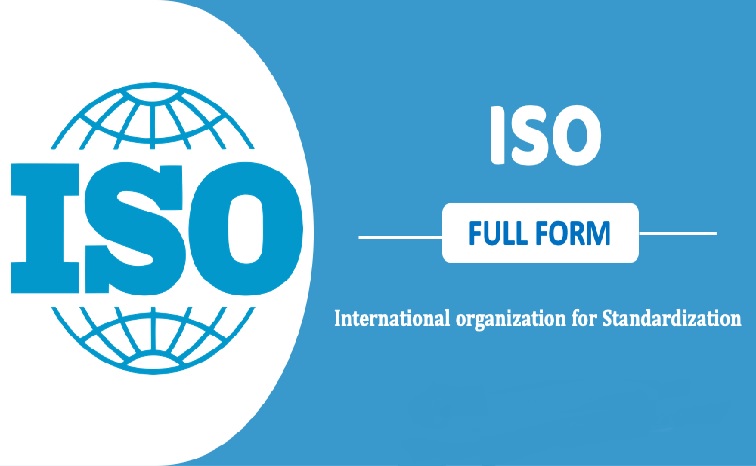SOP Full Form – What is the Full Form of SOP in English

SOP Full Form:
Full form of SOP is Standard operating procedures, modus operandi (MOs), set forms, and standing orders are all terms used to refer to standard operating procedures (SOPs). The phrase “standard operating procedure” was initially used in the mid-20th century to describe a method of conducting business. Simply said, standard operating procedures (SOPs) are step-by-step documentation of work-related duties. Standard operating procedures that are well-written eliminate the guessing that is required to perform assignments.
Employees no longer waste important time debating what they should do, how they should do it, and which equipment they require when they have standard operating procedures in hand. Specialized operating procedures (SOPs) ensure that certain activities are executed in the same manner every time, resulting in the same output every time. Small business owners may feel that standard operating procedures are only beneficial to huge organizations. This is not always true. Standardized quality control, on the other hand, is essential for businesses of all sizes.
SOPs may aid in the streamlining of company operations, the improvement of employee safety, the maximization of efficiency, and the reduction of waste. They are essential in preventing unplanned shutdowns caused by untrained staff.
SOP full form in government?
SOP full form in government is Standard Operating Procedure State or District Control Room.
Advantages of Having SOP
- Demonstrate adherence to organizational and regulatory obligations.
- Reduce the amount of misunderstanding that occurs between personnel, as well as safety risks.
- Prepare auditing checklists to ensure that corporate operations are operating efficiently.
- By reducing the number of mistakes, you may streamline procedures and increase efficiency.
- Reduce the number of unnecessary stages that cause productivity to slacken.
- They can be used as a guideline for re-creating operating systems in new environments.
- Increase the overall quality, credibility, and legal defensibility of outputs by a factor of two.
- Keep track of and evaluate your organization’s effectiveness.
- Improve the efficiency of onboarding and training new staff.
- Increase the level of responsibility across the company.
Components of SOP
SOPs should include at least one of the four components listed below in some form.
- Purpose
This document should specify the aim of the task as well as the objectives that will be achieved by following it. Explain what issues the SOP will answer, who the SOP is intended for, as well as where and how it will be utilized.
- Procedure
A standard operating procedure (SOP) not only outlines tasks but also gives instructions for how tasks should be completed. The scope of the SOP establishes the conditions under which it can be used and applied.
- Responsibilities
The SOP should define who is responsible for doing the duties and who should be contacted if there are any difficulties. It also identifies the individual who will be in charge of its execution, review, and updating.
- Accountability Measures
Standard operating procedures (SOPs) are meant to increase accountability. Defining the roles of each individual inside an organization helps to guarantee that everyone is held accountable for the tasks they are allocated to.
Steps to write the SOP’s
Step 1- Gather Information
It is necessary for the organization to first gather information on the technique, method, and activity in question. When standardizing a method, an expert in the method or an employee who is responsible for completing the work should offer a precise definition of the technique that is being sought to be standardized.
At this point, the aim of the SOP should also be stated clearly. For example, a cleaning standard operating procedure (SOP) might be developed to ensure that the organization’s facilities are constantly immaculately clean.
Step 2- Select a Presentation Format
Organizations that have already produced standard operating procedures (SOPs) might depend on existing templates rather than developing new ones. Those who are creating wholly new standard operating procedures (SOPs) or new business processes can use any of the styles listed above. This is dependent on their company’s business requirements and practices.
Step 3- Obtain Employee Participation
The duties are carried out by the staff. When designing SOPs, it is critical to consider their suggestions. This guarantees that they are on board and makes it much easier to put the SOPs into effect later. Employee participation, according to Balance, is the most important factor in change management. As a bonus, it ensures that all of the required chores are completed.
Step 4- Define the scope of the project
The SOP’s intended usage and applicability should be explicitly established in advance. Create a list of the business processes that will be aided by the SOP.
Step 5-Identify the intended audience
At this point, the company should determine who will be receiving the SOP. Create an SOP that is tailored exclusively to this target demographic. Factors to include are-
- Familiarity with the organization, familiarity with the operations to be standardized, familiarity with terminology, and familiarity with the knowledge level.
- Communication and understanding abilities
- The degree to which you have performed the things you have described
- If the intended users are dispersed over several teams and roles, roles and responsibilities must be defined.
- It is also easier to assign relevant duties and responsibilities in the SOP document when you know who the intended users are.
Step 6- Create a Standard Operating Procedure (SOP).
Write your SOP such that it contains all of the aspects listed above. To draught your SOP, go to the section on the Five Elements of Standard Operating Procedures (SOPs) in this handbook.
Step 7- Examine, test, and refine your work.
After you’ve finished developing the SOP, distribute it to the members of your team for evaluation. Members should put the SOP through its paces to determine if it achieves the desired result and to verify that the wording is clear and that it is simple to implement. Incorporate pertinent ideas and modifications into the final copy to make it stronger and more professional.
Step 8- Put the SOP into action.
Once the SOP paper has been approved, it should be made available to all relevant workers so that they may put it into effect. Employees should get proper training and equipment to ensure that SOPs are followed. Management is responsible for monitoring compliance, enforcing responsibility, and evaluating results in real-time. A review can be carried out regularly or whenever it is appropriate to record changes in present procedures or to make improvements to them.




